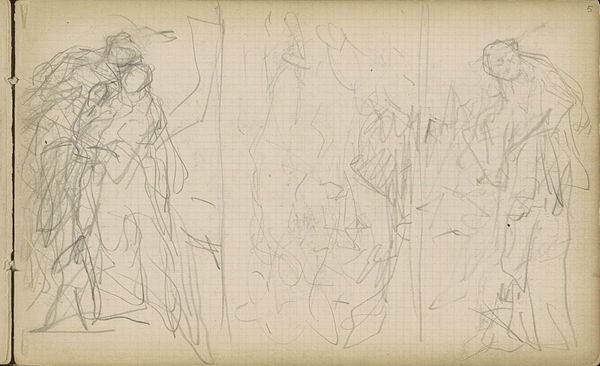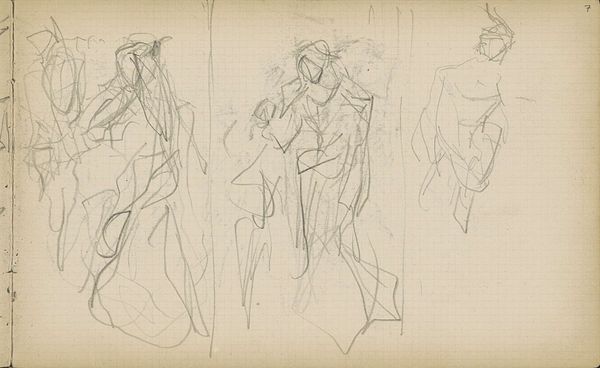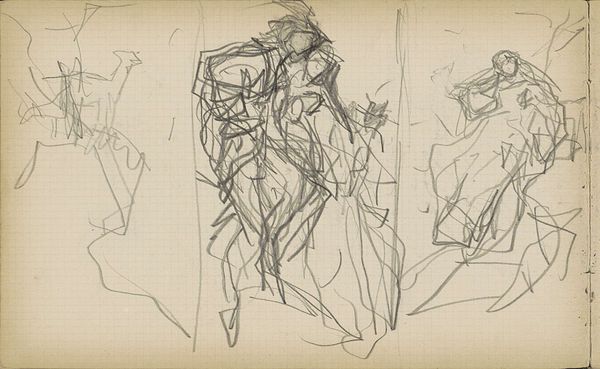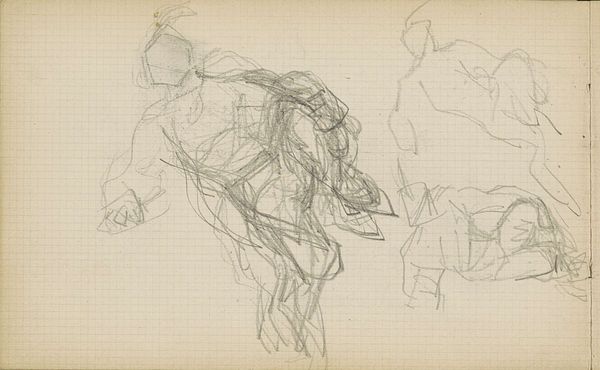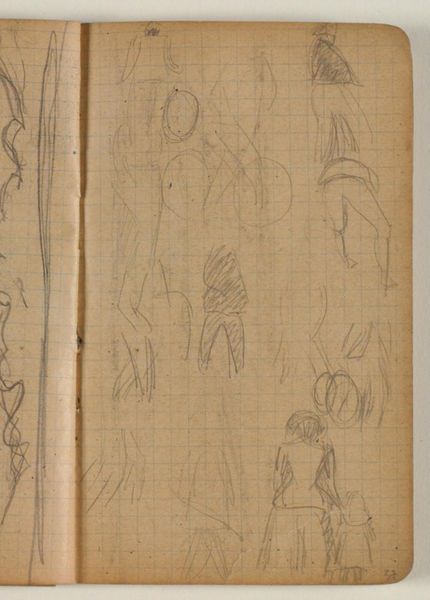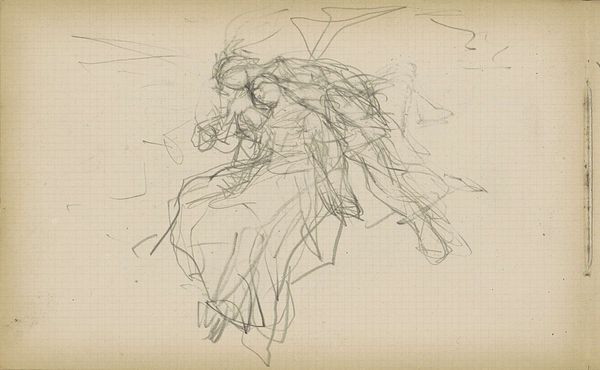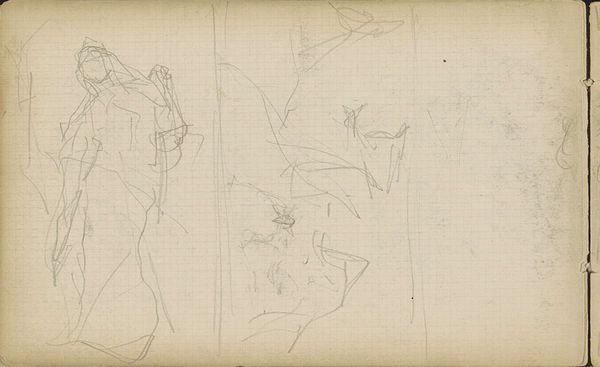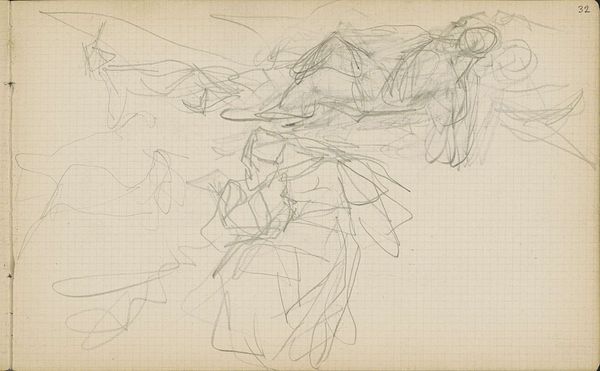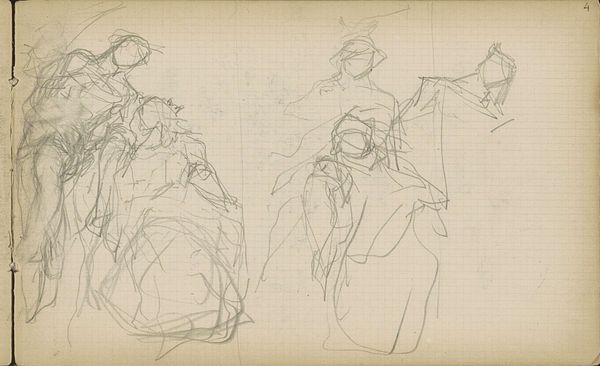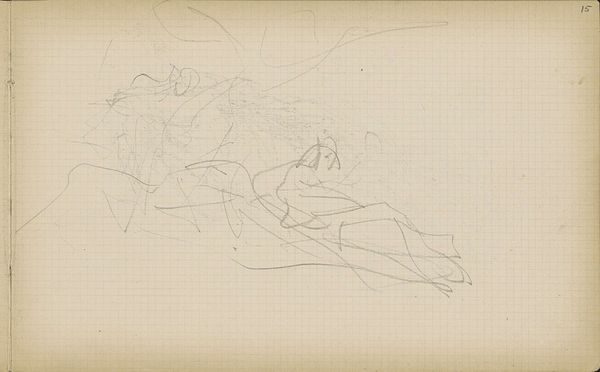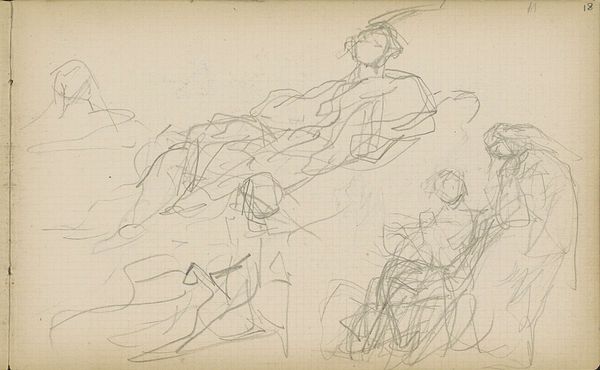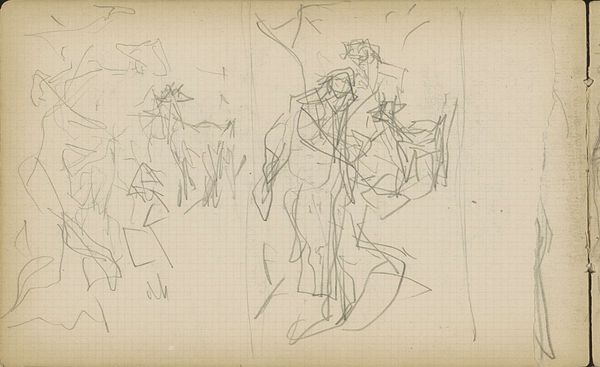
drawing, paper, pencil
#
portrait
#
drawing
#
light pencil work
#
impressionism
#
figuration
#
paper
#
personal sketchbook
#
sketchwork
#
ink drawing experimentation
#
pen-ink sketch
#
pencil
#
line
#
sketchbook drawing
#
storyboard and sketchbook work
#
fashion sketch
#
sketchbook art
#
initial sketch
Copyright: Rijks Museum: Open Domain
Editor: Here we have Matthijs Maris's "Standing Figures in Long Robes," made sometime between 1849 and 1917. It's a pencil drawing on paper. There’s something ethereal and ghostly about the figures. How do you interpret this work, especially considering its time? Curator: This seemingly simple sketch actually invites us to consider complex questions about representation and power. Maris was working during a time of intense social and political upheaval, and his artistic choices were invariably tied to those realities. Looking at these figures, I wonder: who are they? Who were such garments really for at that time, who did they empower or erase, and what statements were being made with their presentation in different contexts? Editor: That's an interesting point, I hadn't really considered it from that perspective. I suppose I was mainly looking at the aesthetic choices... the line work is so delicate! Curator: Absolutely, and the delicacy is also telling. It might signal a certain vulnerability, or perhaps a subtle critique of the grand, imposing portraits that were popular at the time. Can you see the suggestion of erasure of individuals through the lines, especially of the faces? Perhaps reflecting the societal erasures of so many? Editor: Yes, I see that now. So, instead of celebrating status, he’s almost… questioning it? Curator: Precisely. Consider the historical context: the rise of industrialism, changing class structures... Art wasn't created in a vacuum. Maris may be subverting expectations, challenging the very idea of who gets memorialized, and how, when such monumental shifts in history affected so many in different ways. What do you make of this intention reflected on the materials he employed to convey such questions? Editor: So, it’s not just a pretty sketch. It’s a reflection of a changing society, questioning traditional power structures. I learned a lot by seeing beyond the surface, seeing how context informs art. Curator: Indeed. And understanding that the aesthetic *is* the political.
Comments
No comments
Be the first to comment and join the conversation on the ultimate creative platform.
